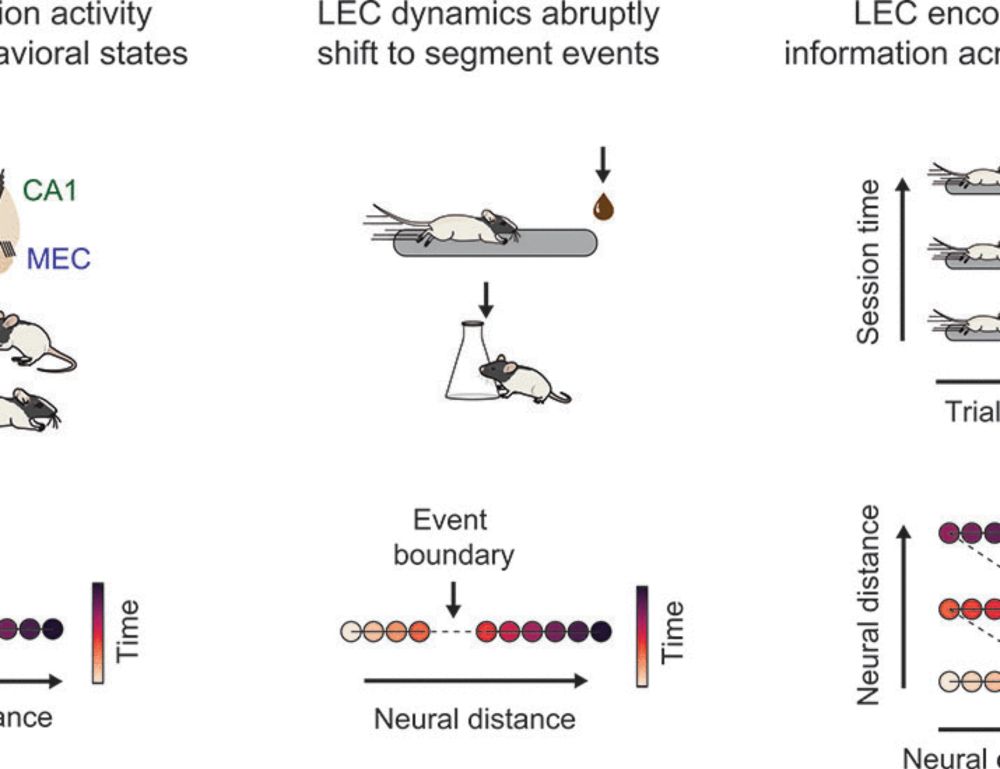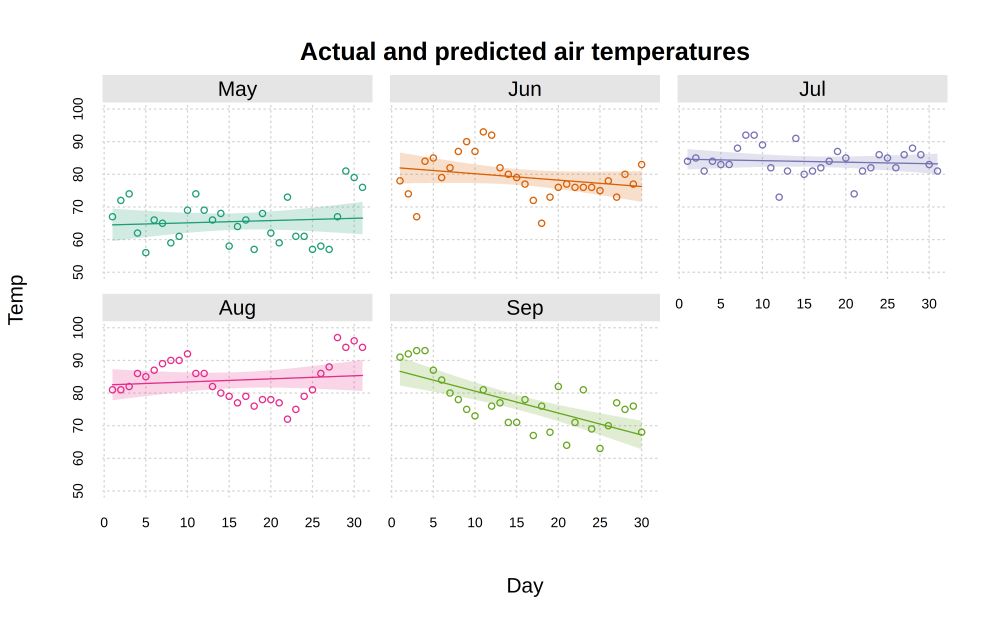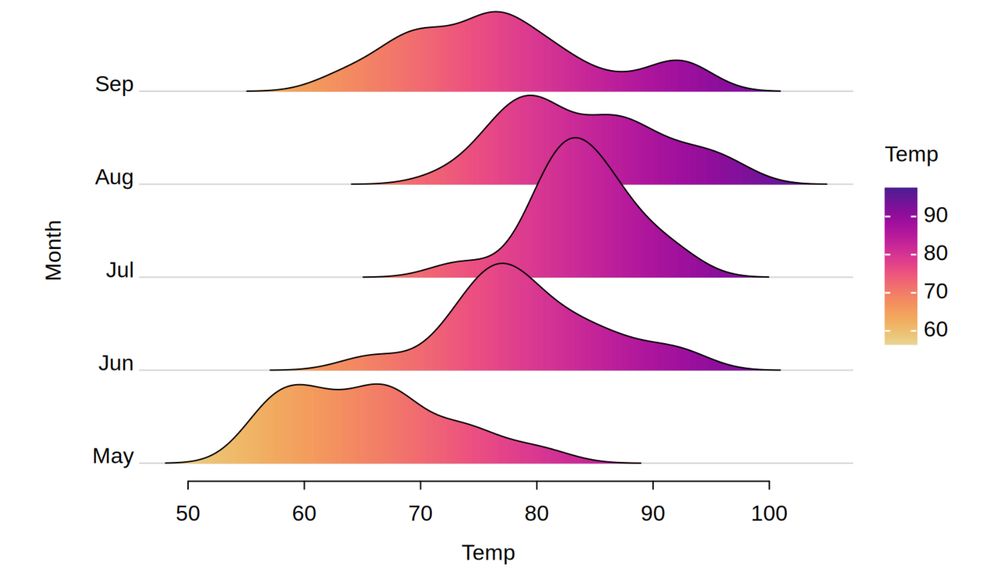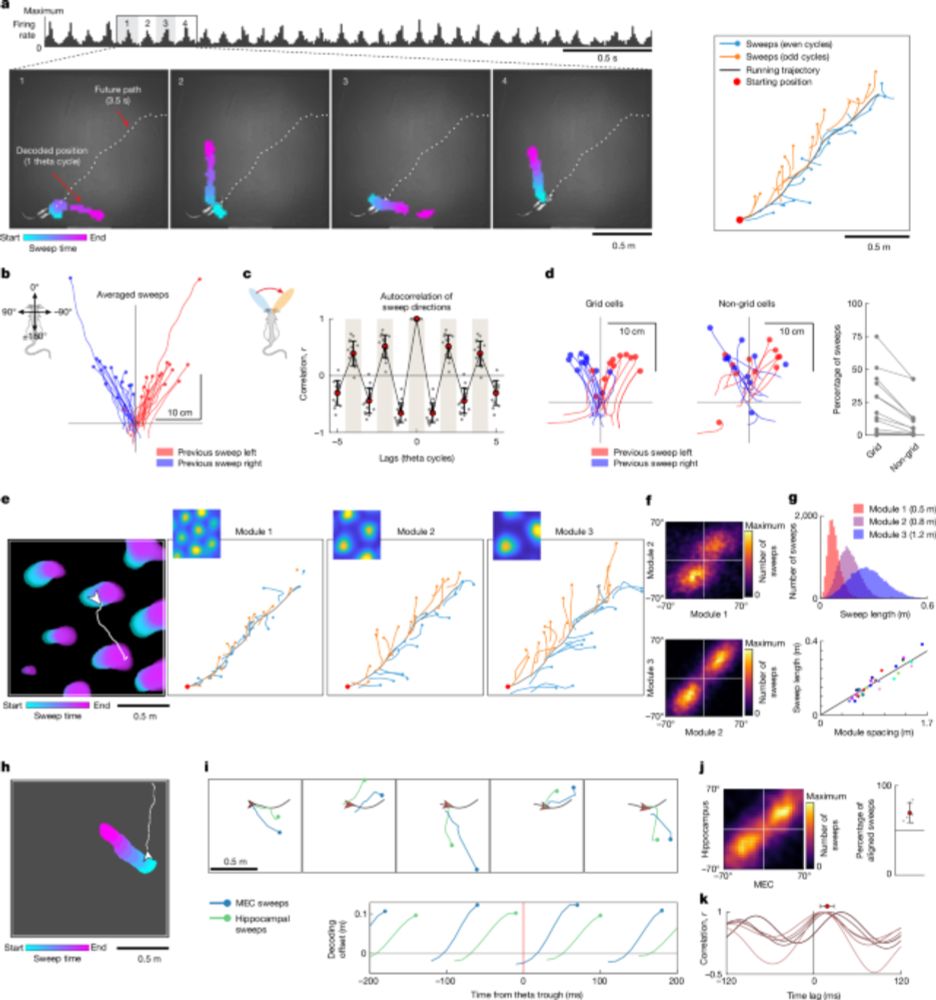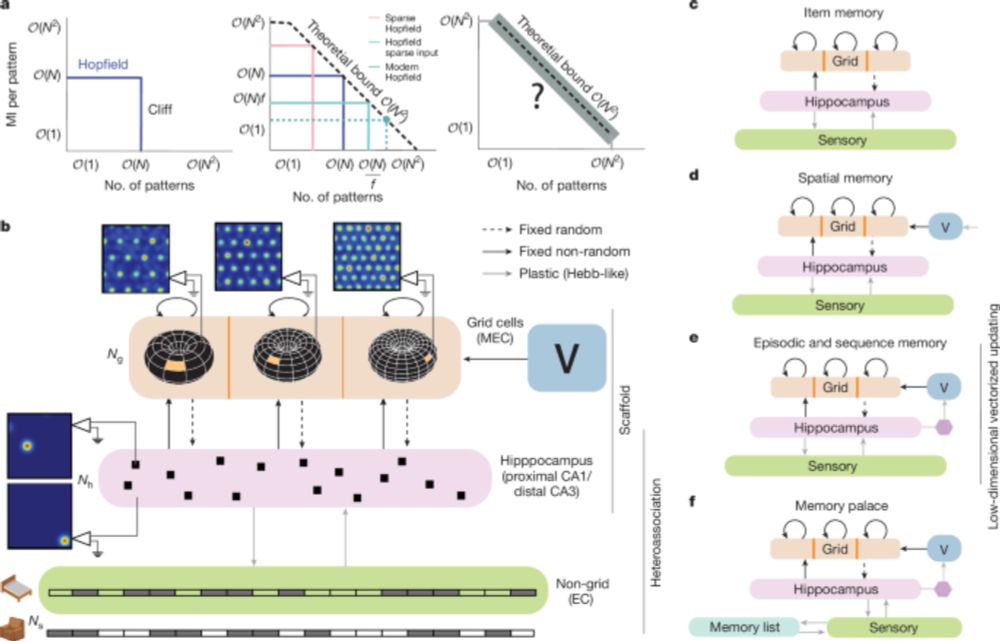Our review on intracranial research on consciousness is now out as a preprint: arxiv.org/abs/2510.08736. I believe that intracranial recordings provide one of the most exciting avenues for research on consciousness right now! If you agree, I think you will find the review interesting 🤓
13.10.2025 15:34 — 👍 9 🔁 3 💬 1 📌 0
If you attend #TRF4 in Tokyo and always wondered how humans represent durations, make sure to check out @grassocamille.bsky.social’s talk on Sunday morning!
Spoiler: Durations are mentally organised along (at least) three interpretable dimensions! More complex structure than we previously assumed.
17.10.2025 00:41 — 👍 9 🔁 1 💬 0 📌 0

Very excited to have @brynnsherman.bsky.social join us for the next @timingresforum.bsky.social Virtual Journal Club! Please join us for what should be a very interesting talk on her recent work! Sign-up details below:
mailchi.mp/28692b147cb0...
10.09.2025 17:20 — 👍 16 🔁 5 💬 0 📌 1

Great to have another paper with @chazfirestone.bsky.social @ianbphillips.bsky.social and the brilliant Hanbei Zhou out! In this paper we demonstrate that stimuli within events are perceived further apart in time — an event-based analog of “object-based warping”. psycnet.apa.org/record/2026-...
04.09.2025 16:27 — 👍 85 🔁 20 💬 3 📌 3
Job announcement 📢
@shawnrhoadsphd.bsky.social and I are looking for a joint postdoc interested in computational models of social interaction!
Interested? If you’ll be at #rlc2025 (or I missed you at #cogsci2025) feel free to reach out with any questions!
apply.interfolio.com/165809
04.08.2025 17:35 — 👍 25 🔁 17 💬 0 📌 0

Seeing the Mind, Educating the Brain
If you are in Paris on October 1-3 : we are organizing a fantastic cognitive neuroscience conference at Collège de France, on topics ranging from language to math, education and consciousness, with many of my favorite scientists !
Full program here:
www.unicog.org/seeing-the-m...
23.07.2025 14:46 — 👍 78 🔁 33 💬 3 📌 2
Happy to have contributed together with @lgrabot.bsky.social to discuss #traveling_waves and cognition!
23.07.2025 05:16 — 👍 20 🔁 7 💬 0 📌 0

Overview of the simulation strategy and analysis. a) Pial and white matter boundaries
surfaces are extracted from anatomical MRI volumes. b) Intermediate equidistant surfaces are
generated between the pial and white matter surfaces (labeled as superficial (S) and deep (D)
respectively). c) Surfaces are downsampled together, maintaining vertex correspondence across
layers. Dipole orientations are constrained using vectors linking corresponding vertices (link vectors).
d) The thickness of cortical laminae varies across the cortical depth (70–72), which is evenly sampled
by the equidistant source surface layers. e) Each colored line represents the model evidence (relative
to the worst model, ΔF) over source layer models, for a signal simulated at a particular layer (the
simulated layer is indicated by the line color). The source layer model with the maximal ΔF is
indicated by “˄”. f) Result matrix summarizing ΔF across simulated source locations, with peak
relative model evidence marked with “˄”. g) Error is calculated from the result matrix as the absolute
distance in mm or layers from the simulated source (*) to the peak ΔF (˄). h) Bias is calculated as the
relative position of a peak ΔF(˄) to a simulated source (*) in layers or mm.
🚨🚨🚨PREPRINT ALERT🚨🚨🚨
Neural dynamics across cortical layers are key to brain computations - but non-invasively, we’ve been limited to rough "deep vs. superficial" distinctions. What if we told you that it is possible to achieve full (TRUE!) laminar (I, II, III, IV, V, VI) precision with MEG!
02.06.2025 11:54 — 👍 112 🔁 45 💬 4 📌 8

Dopaminergic processes predict temporal distortions in event memory
Our memories do not simply keep time - they warp it, bending the past to fit the structure of our experiences. For example, people tend to remember items as occurring farther apart in time if they spa...
New from our lab: your brain doesn’t just remember time - it bends it.
We show that the dopamine system responds to natural breakpoints in experience, and this relates to more stretched memories of time. Blinking also increases, signaling encoding of new memories.
www.biorxiv.org/content/10.1...
19.05.2025 21:56 — 👍 94 🔁 35 💬 3 📌 3

Alpha power indexes working memory load for durations
Timing, that is estimating, comparing, or remembering how long events last, requires the temporary storage of durations. How durations are stored in working memory is unknown, despite the widely held ...
Episode II of how are durations stored in working memory:
Besides replicating our previous findings, we find that
alpha power reflects a universal signature of WM load and mediates recall precision, even for abstract information like duration
www.biorxiv.org/content/10.1...
🔽 co-authors below
15.05.2025 11:15 — 👍 18 🔁 8 💬 1 📌 0
Please reach out if you’d like to come to sunny Aix-en-Provence (in the south of France) to work on anything related to the neural and computational bases of inner speech and/or mental/motor imagery!
10.05.2025 14:41 — 👍 15 🔁 8 💬 0 📌 0
Please RT🙏
Reach out if you want to help understand cognition by modelling, analyzing and/or collect large scale intracortical data from 👩🐒🐁
We're a friendly, diverse group (n>25) w/ this terrace 😎 in the center of Paris! See👇 for + info about the lab
We have funding to support your application!
10.05.2025 14:23 — 👍 39 🔁 21 💬 1 📌 0

Colloquium “Seeing the mind, educating the brain” Oct 1-3, 2025, at Collège de France.
www.unicog.org/seeing-the-m...
01.04.2025 15:12 — 👍 8 🔁 2 💬 0 📌 0
SEEKING POSTDOCS AND STUDENTS for computational/experimental collaboration on neuroscience of human rhythm perception! Thread!
01.04.2025 15:12 — 👍 16 🔁 9 💬 2 📌 1
A quick guide to mastering Gantt charts
Hey, I put together these slides a little while ago for a team meeting — just a quick intro to making Gantt charts in R.
Nothing fancy, but if it helps someone, I'm happy :) grassocamille.netlify.app/files/gantt_...
01.04.2025 15:56 — 👍 6 🔁 4 💬 0 📌 0
OSF
Our memories are not encoded with timestamps. How do we reconstruct the passage of time from our memories? In a new paper (accepted at Psych Science) @samiyousif.bsky.social and I demonstrate a powerful illusion of time that results from repeated experience osf.io/preprints/ps...
03.03.2025 19:24 — 👍 109 🔁 33 💬 4 📌 5

The brain doesn’t process pitch in an unstructured way. Typically, it represents pitches in a mostly linear structure—think piano keyboard layout. BUT—just 0.3 seconds after hearing a sound, something wild happens: the brain briefly represents pitch in a helix-like structure! 5/n
19.02.2025 20:18 — 👍 16 🔁 2 💬 1 📌 0

Introduction to EEG/MEG data analysis - YouTube
Introduction to EEG/MEG data analysis playlist featuring multiple videos split into topics set out below. Presented by Olaf Hauk from the MRC CBU. EEG/MEG me...
I put some introductory #EEG / #MEG videos together, based on our introduction to #neuroimaging at the @mrccbu.bsky.social
: youtube.com/playlist?lis.... They should cover the most common aspects of EEG/MEG analysis, including pre-processing, source estimation and functional connectivity.
20.02.2025 15:41 — 👍 52 🔁 24 💬 2 📌 0
@lnalborczyk.bsky.social is fantastic - anyone interested in voice neuroscience and cognitive modeling please keep tabs !
20.01.2025 16:42 — 👍 1 🔁 1 💬 0 📌 0
If you’re interested in a PhD at Oxford in the life sciences (including Neuroscience!) then you should consider applying for this newly funded Doctoral Training Program. It is the successor to the highly successful BBSRC Interdisciplinary Bioscience DTP at Oxford. Deadline 29th January!
16.01.2025 15:45 — 👍 3 🔁 3 💬 0 📌 0
PhD student working on hallucinations in Parkinson's disease by day ,
Loser by night
she/her
PhD candidate in philosophy and psychology at Johns Hopkins, interested in moral psychology, emotions, and perception
Prof at Monash U (Aus) and Leader in Department of Qualia Structure in ATR (Japan). Lab home page: https://sites.google.com/monash.edu/tlab/home. My first book in Japanese: https://tinyurl.com/43ad7fyx
UF Assistant Professor. Attention, Perception, Consciousness.
Neuroscience Research Director
@ French Institute of Health (INSERM)
@ University of Bordeaux
SNF Ambizione Fellow @cognition-zurich.bsky.social. Working on Psychometrics, Cognitive Modeling & Individual Differences.
Co-Developer of bmm: R package for Bayesian Measurment Models: https://github.com/venpopov/bmm
Neuro Postdoc @ Harvard Med / Mass General | he/him
Psychology prof at UniMelb, co-director of MetaMelb (interdisciplinary metascience lab).
Live (mostly) in Sydney.
Study credibility of science & how to improve it.
@siminevazire on Twitter
L’ANR, l’agence française de la recherche sur projets. Opérateur de France 2030.
The French national research agency #ANR #AgenceRecherche #France2030
www.anr.fr
Associate Professor, Indiana University
Mnemology Lab: mnemology.org
Médecin de formation, #journaliste médico-scientifique par vocation. #Freelance
✍ Nouvelle adresse du #blog 'Réalités Biomédicales' https://www.lemonde.fr/realites-biomedicales/
✍ Archives (734 billets) https://www.lemonde.fr/blog/realitesbiomedicales/
Neuropsychologist and PhD in cognitive psychology at Aix-Marseille Université.
Working on statistical learning, memory, chunking and language acquisition.
PostDoc, Moral & Social Brain Lab, UGent.
Experimenting stuff on moral cognition in social contexts using (hyperscanning) EEG. Cortecs member. 👾 evavives.github.io//
Prof. of Cognitive Neuroscience at SISSA
www.buetilab.com
Prof. Most tweets about R. “Polisci, it’s all about what’s going on.”
http://arelbundock.com
Scientific Co-Director and Professor at Kavli Institute for Systems Neuroscience, NTNU, Norway. Neural network computation, grid cells. Nobel Prize Physiology-Medicine 2014.
Cognitive neuroscientist interested in temporal cognition, mental representation, consciousness, and brain dynamics.







